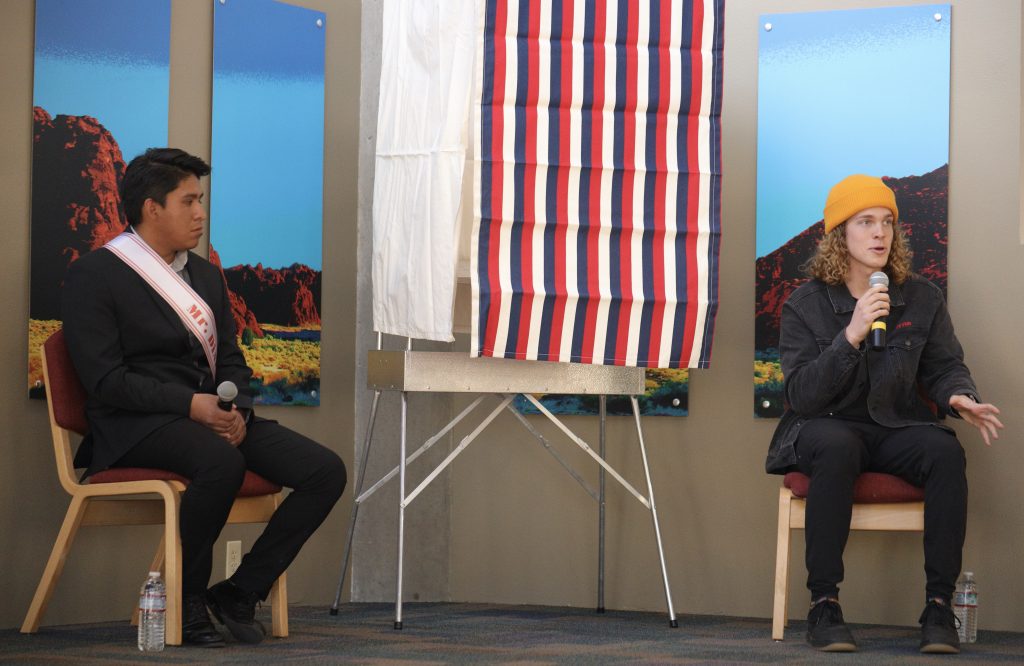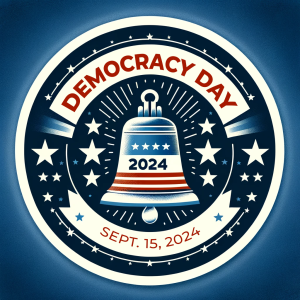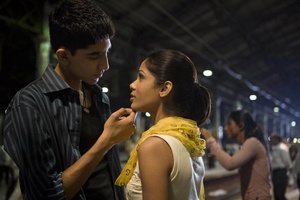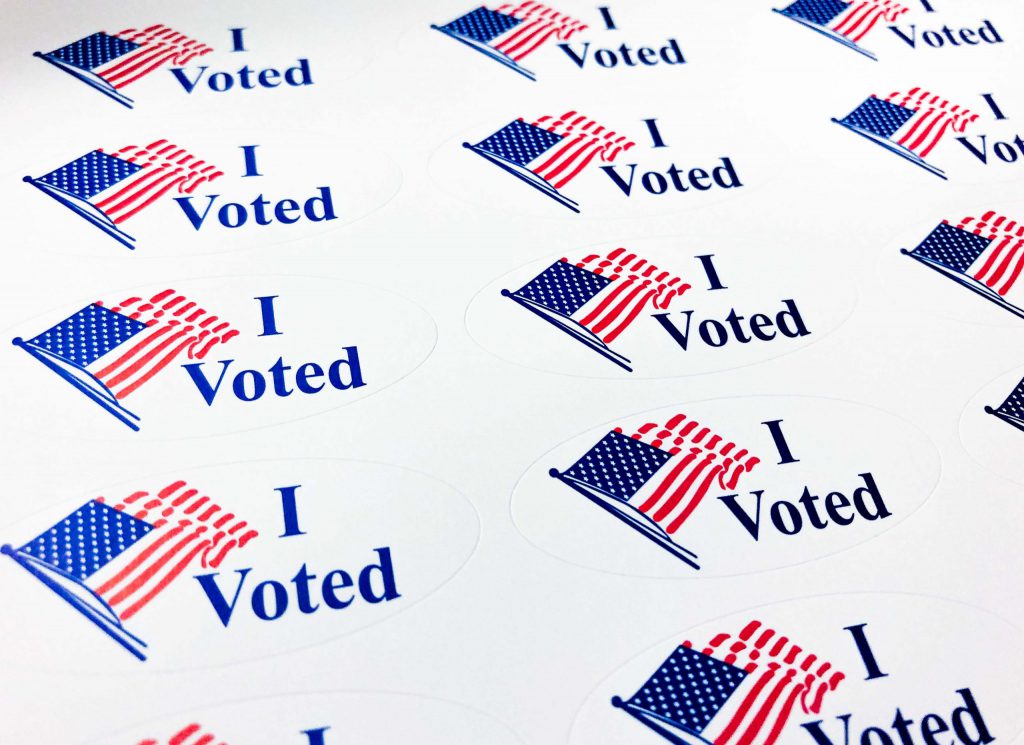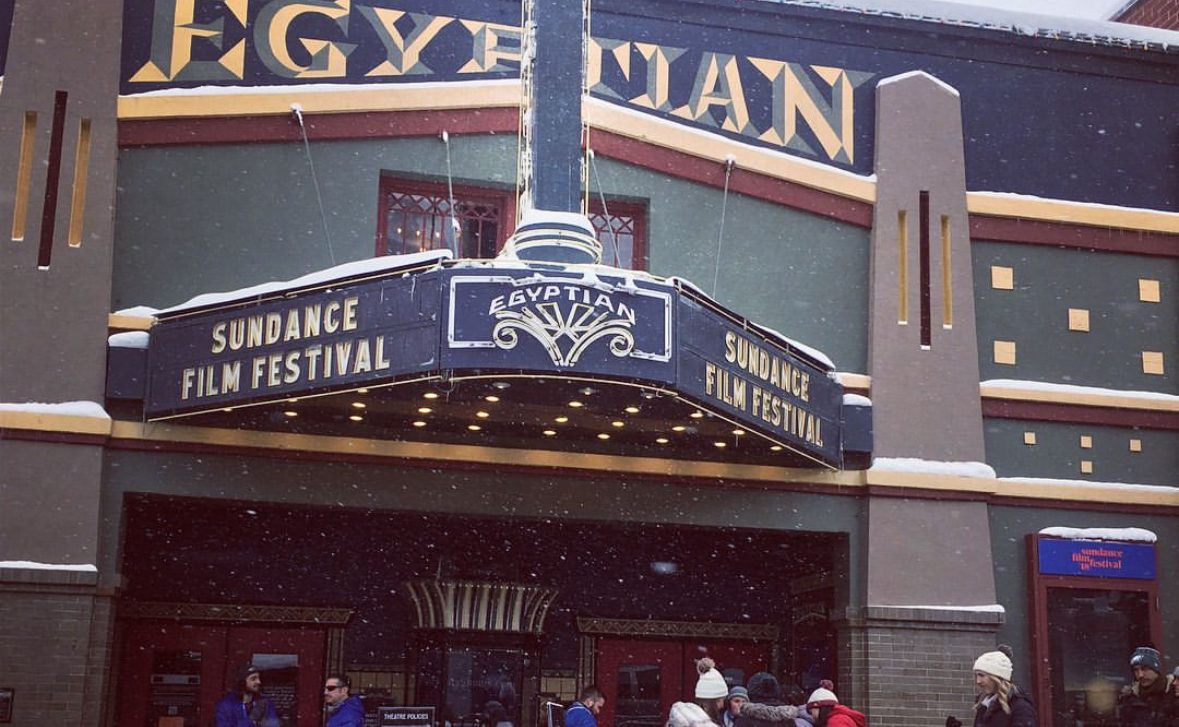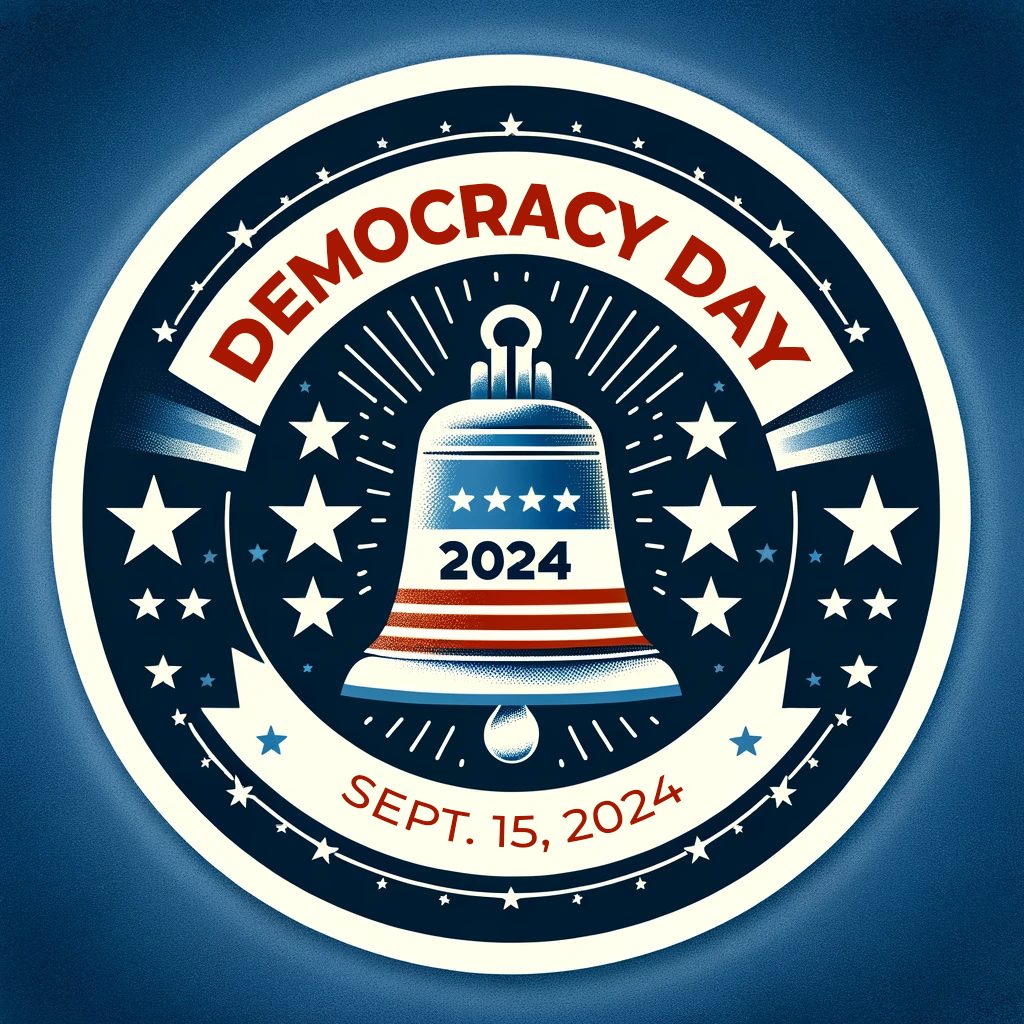Moore praised the 2017 Tax Cuts and Jobs Act and said Congress should renew its individual tax cuts expiring in 2025. He also discussed cutting deficit spending and student loan debt.
By: Josi Hinds
This story is published as part of U.S. Democracy Day and the Utah College Media Collaborative, a cross-campus project bringing together emerging journalists from Salt Lake Community College, the University of Utah, Utah State University and Utah Tech University.
“It’s the boring stuff that really, really matters,” Congressman Blake Moore said to an audience of University of Utah students, locals and U staff on Wednesday.
Moore shared his thoughts on economic policies, student loan debt and why tax law makes this year’s election so important, as part of the Sutherland Institute’s Congressional Series.
2024 Election Stakes
The Tax Cuts and Jobs Act passed in 2017, made several sweeping changes to the U.S. tax code. In addition to permanently cutting the corporate tax rate from 35% to 21%, the act included several tax cuts for individuals. These individual tax provisions, however, will expire at the end of 2025.
“[The partial expiration of the Tax Cuts and Jobs Act is] why this election cycle is quite important,” Moore said. “And my frustration is that you don’t hear that in the national discourse. You don’t hear that from either presidential candidate right now talking about these particular key policies.”
Moore hopes this election will result in a unified government, where Congress and the White House are run under one party. That would give lawmakers the opportunity to reconcile budgets and build “a really solid re-up of the 2017 tax bill.”
“But what Republicans don’t engage on enough is sticking together and being a team. If we’re a team, we can accomplish more,” he said. “We have to accomplish something when we’re in the majority. We’ve got to govern, or we won’t get a chance to govern for much longer.”
Welfare Spending
Moore suggested cutting wasteful spending and changing the way the government funds Social Security and Medicare to hone in on the national debt.
“Our debt is far different than it was in 2017, far worse, obviously,” Moore said, arguing that cutting deficit spending as much as possible should be a priority. Currently, the U.S. is operating with a debt of $1.5 trillion.
Moore said that there are several ways the U.S. could cut wasteful spending in efforts to reduce the national deficit.
“There’s lots of waste in our federal government,” he said. “Before you even address Social Security, Medicare, there’s still tons of waste that exists out there. So, we want to be able to go after that.”
Moore explained the two different spending “buckets” the federal government operates with, known as discretionary and mandatory spending.
Discretionary spending is appropriated annually as part of the yearly budget process. Lawmakers also vote to approve this spending. Mandatory spending is dictated by prior law and is not voted on or altered by lawmakers.
Welfare programs like Social Security and Medicare are funded by mandatory spending.
However, Moore said that funding for these programs should shift. He argued that allowing lawmakers to vote and alter the financing of these programs would help control their growth and reduce inflation.
“If you don’t give lawmakers an opportunity to actually roll their sleeves up and get involved in these programs, they are going to grow out of control,” Moore said. “When I say out of control, I mean their growth rate is going to increase significantly, especially with an aging population. We need the ability to go actually after that.”
The more money the government allocates to these programs, especially as these programs grow in size, the more inflation rises as a consequence, Moore added.
“If we actually lowered what we were doing, I think that overall the economy would settle in and things wouldn’t cost as much,” he said.
What to Cut, What to Keep
When asked what should be changed about the Tax Cuts and Jobs Act, Moore suggested reducing deficit spending and creating a program for “opportunity zones.”
“There are communities in every state in the country that are underserved,” Moore said. “They have not had proper investment into them … Well, what opportunity zones are is an investment structure that will encourage development.”
Moore mentioned an investment project in Anacostia, D.C., as an example of successfully developing underinvested areas.
The Tax Cuts and Jobs Act contains several things worth keeping, Moore said. He pointed to FDII, a program meant to encourage U.S.-based multinational companies to invest more in the U.S.
He also praised the lower corporate tax rate while admitting it is a “hot button issue.”
“We saw real wage growth take place after that. Companies had the opportunity to invest more in the things that helped grow their business, and a big, big part of that is labor force.”
College Students and Taxes
“This matters because you will be entering the workforce,” Moore said. “You might already have a job, you might be doing some, but you’ll be entering the workforce soon. And the decisions we make now will have a profound impact on you all.”
Moore said students should not be worried about taking on student loan debt.
“Don’t be scared of that … be smart about it. Work your tail off. Work as hard as you can. Value that education,” he said. “Help limit that deficit as much as you can. But you’re investing in yourself, so that’s okay.”
Moore pointed out a bill Congress passed in 2022 called Secure 2.0.
The Secure 2.0 program was built to help people facing student loan debt, Moore explained. The bill outlines that whenever an employee makes a payment on their student loan, the company can match that payment and put it towards a 401(k).
“Companies want to do it,” Moore said. “Employees should love that, and it should be a really great thing that your company will offer, and you will start saving for your own retirement five, six years sooner than you otherwise would have.”
Josi Hinds reported and wrote this story as a journalism student with The Daily Utah Chronicle at the University of Utah. Her article is part of U.S. Democracy Day, a nationwide collaborative on Sept. 15, the International Day of Democracy, in which news organizations cover how democracy works and the threats it faces. To learn more, visit usdemocracyday.org.
j.hinds@dailyutahchronicle.com
@JosiHinds



